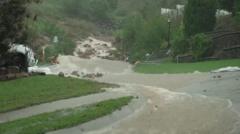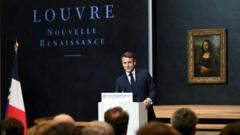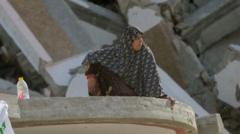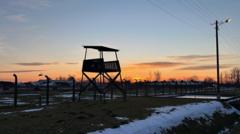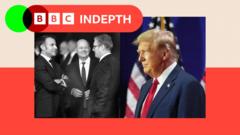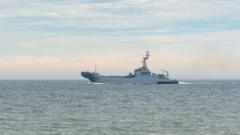In a recent letter from the Louvre's president, alarming reports regarding the museum's deteriorating conditions have come to light, prompting concerns over visitor experience and art preservation.
Macron Set to Address Louvre’s Deteriorating Conditions Amid Funding Crisis
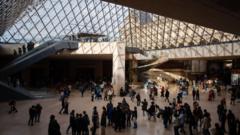
Macron Set to Address Louvre’s Deteriorating Conditions Amid Funding Crisis
French President Macron plans a visit to the Louvre to discuss the urgent need for state funding as the museum faces significant infrastructure challenges.
---
Every day, around 30,000 art enthusiasts traverse the iconic halls of the Louvre, cementing its status as the world's most popular museum. However, recent warnings from Laurence des Cars, the museum's president, reveal that the Louvre is facing an urgent need for state intervention to manage the growing influx of visitors and the wear on its infrastructure.
Des Cars pointed out serious issues in a letter to the government, indicating that ongoing power-cut incidents, flooding, and overall failing facilities are jeopardizing the museum's function and visitor safety. Notably, she highlighted that the Louvre’s famed glass pyramid, which serves as the main entrance, is “structurally unable to cope” with the current visitor volume and posed the possibility of relocating Leonardo da Vinci's Mona Lisa, viewed by over 20,000 people daily, to ensure the painting's protection.
Amid growing concern about these infrastructural deficits, President Emmanuel Macron’s anticipated visit on Tuesday comes with hopes of a new investment plan, although his recently diminished parliamentary control may pose challenges to securing substantial funding. The current financial climate in France is fraught, particularly with the 2025 budget still being negotiated, leaving major fiscal commitments fraught with debate.
Louvre employee and trade union representative Christian Galani underscored the urgency of the situation, stating, "not a day goes by without some new sign of the building's decline," citing issues like flooding in exhibition and storage areas, and significant temperature fluctuations threatening both visitor experience and the preservation of artworks.
In her correspondence, Des Cars also emphasized the pressing need for improved visitor amenities including better restroom facilities, cafes, and places to rest. The experience of viewing the Mona Lisa has also undergone significant strain amid crowds, where visitors are now given, on average, only 50 seconds to appreciate the iconic work, raising questions regarding the museum’s commitment to public service.
To alleviate overcrowding, Louvre officials are contemplating a strategic new entrance beneath the colonnades at the palace's eastern end, which would help manage the flow of visitors. Additionally, there are proposals to possibly relocate the Mona Lisa to a separate location requiring an extra fee for entry, although these ideas are still under consideration.
Despite receiving a substantial state subsidy of €96 million for 2024 and ticket sales generating revenues of €161 million in 2023, the museum is being driven toward seeking more corporate donations and philanthropy. The Culture Minister, Rachida Dati, has suggested raising entry fees for non-European visitors, indicating a strategic shift to bolster funding amidst a climate of diminishing state support.
Every day, around 30,000 art enthusiasts traverse the iconic halls of the Louvre, cementing its status as the world's most popular museum. However, recent warnings from Laurence des Cars, the museum's president, reveal that the Louvre is facing an urgent need for state intervention to manage the growing influx of visitors and the wear on its infrastructure.
Des Cars pointed out serious issues in a letter to the government, indicating that ongoing power-cut incidents, flooding, and overall failing facilities are jeopardizing the museum's function and visitor safety. Notably, she highlighted that the Louvre’s famed glass pyramid, which serves as the main entrance, is “structurally unable to cope” with the current visitor volume and posed the possibility of relocating Leonardo da Vinci's Mona Lisa, viewed by over 20,000 people daily, to ensure the painting's protection.
Amid growing concern about these infrastructural deficits, President Emmanuel Macron’s anticipated visit on Tuesday comes with hopes of a new investment plan, although his recently diminished parliamentary control may pose challenges to securing substantial funding. The current financial climate in France is fraught, particularly with the 2025 budget still being negotiated, leaving major fiscal commitments fraught with debate.
Louvre employee and trade union representative Christian Galani underscored the urgency of the situation, stating, "not a day goes by without some new sign of the building's decline," citing issues like flooding in exhibition and storage areas, and significant temperature fluctuations threatening both visitor experience and the preservation of artworks.
In her correspondence, Des Cars also emphasized the pressing need for improved visitor amenities including better restroom facilities, cafes, and places to rest. The experience of viewing the Mona Lisa has also undergone significant strain amid crowds, where visitors are now given, on average, only 50 seconds to appreciate the iconic work, raising questions regarding the museum’s commitment to public service.
To alleviate overcrowding, Louvre officials are contemplating a strategic new entrance beneath the colonnades at the palace's eastern end, which would help manage the flow of visitors. Additionally, there are proposals to possibly relocate the Mona Lisa to a separate location requiring an extra fee for entry, although these ideas are still under consideration.
Despite receiving a substantial state subsidy of €96 million for 2024 and ticket sales generating revenues of €161 million in 2023, the museum is being driven toward seeking more corporate donations and philanthropy. The Culture Minister, Rachida Dati, has suggested raising entry fees for non-European visitors, indicating a strategic shift to bolster funding amidst a climate of diminishing state support.

